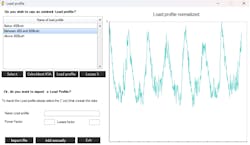In the early 2000s, I vividly recall my father, a self-taught programmer and electrical engineer, developing a Visual Basic application to calculate voltage regulation for his local utility company. Back then, such tools were scarce. Now, two decades later, it's startling to see that many utility companies, particularly in developing economies, still lack efficient, accessible software for analyzing distribution line designs.
These companies face the challenge of mastering specialized software or paying steep costs for requisite training courses. This shortage of resources exacerbates the issue of energy losses, an ongoing problem that costs utility companies millions each year, with suboptimal design contributing to technical losses.
Growing up in one of the world's poorest countries, Honduras, I saw the daily struggles of many people grappling with high electrical utility bills, largely a result of power losses within the country. The hardship was often so severe that families had to choose between basic necessities like food and keeping the lights on.
For some, failing to pay the bill led to a disconnection of service, worsening their struggles. This often led to challenges for entire families, including children who found it difficult to complete homework for school, or families were forced to go without essential appliances, further impacting their daily lives.
Witnessing first-hand the impact of high energy costs on living standards in Latin America spurred me to improve energy efficiency. I set out on a personal mission to create a user-friendly tool capable of calculating voltage regulation and technical losses on a secondary distribution grid.
This endeavor resulted in Gridsyst — a tool that any engineer can use without prior training or costly courses. Whether they're from a utility company or an independent designer, Gridsyst empowers users to draw a distribution grid and thoroughly analyze all edges and nodes. It allows for specifying conductor types, transformer characteristics (including winding and iron losses, whether tri-phase or single-phase), and varying load profiles for different energy behaviors.
While analyzing existing grids for retrofitting or pre-approval design review is one facet, the ability to design a distribution grid from scratch is transformative for many designers. Gridsyst facilitates optimal grid design with the least technical losses, factoring in statistical demand based on selected user energy consumption profiles. Gridsyst doesn't just assist in design; it intelligently chooses the ideal placement for your transformer. Leveraging advanced algorithms, it automatically selects the transformer's optimal KVA and identifies the precise location — be it a utility pole or an underground vault — for transformer installation.
Gridsyst's capabilities extend beyond individual transformer placement. Consider an urban design project undertaken by a design company. Reducing man-hours spent analyzing optimal transformer placements can result in substantial cost savings. Gridsyst users can draw a comprehensive urban design, and the software's optimization algorithms take it from there.
Upon inputting anticipated distances and outlining nodes, Gridsyst will delineate the grid into distinct zones, eliminating unneeded connections and positioning the requisite transformers. In an era where sustainability and efficiency are of paramount importance, Gridsyst offers a solution to the ongoing problem of energy losses in power distribution, a challenge especially critical in developing economies.
From small-scale projects to comprehensive urban designs, Gridsyst cuts down the time and effort required, resulting in tangible cost savings. By harnessing the power of advanced algorithms and user-friendly design, Gridsyst is tool born out of necessity, driven by innovation, and aimed at making a practical difference in the industry.



